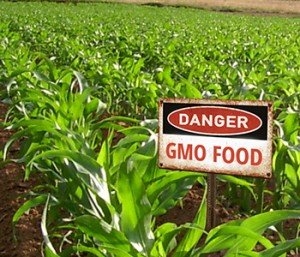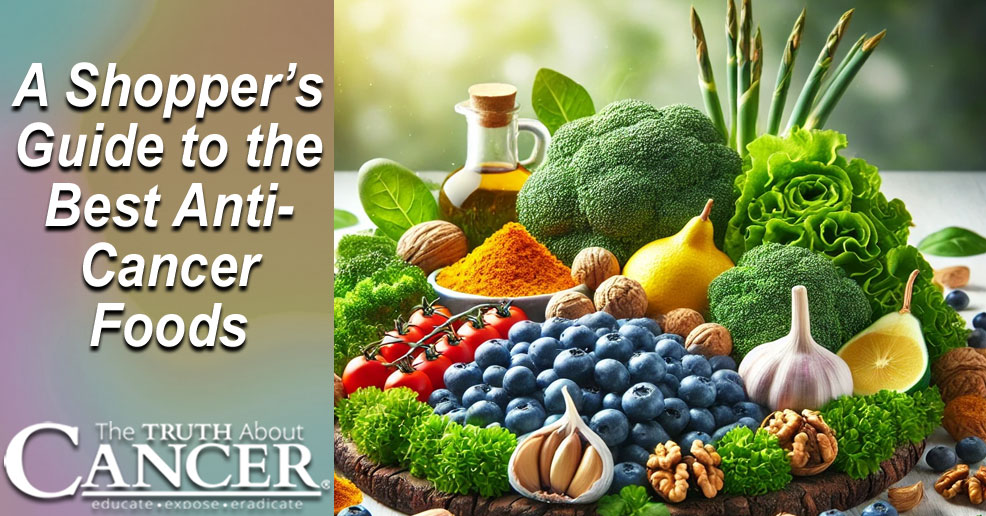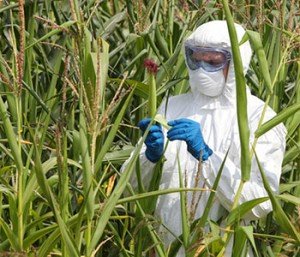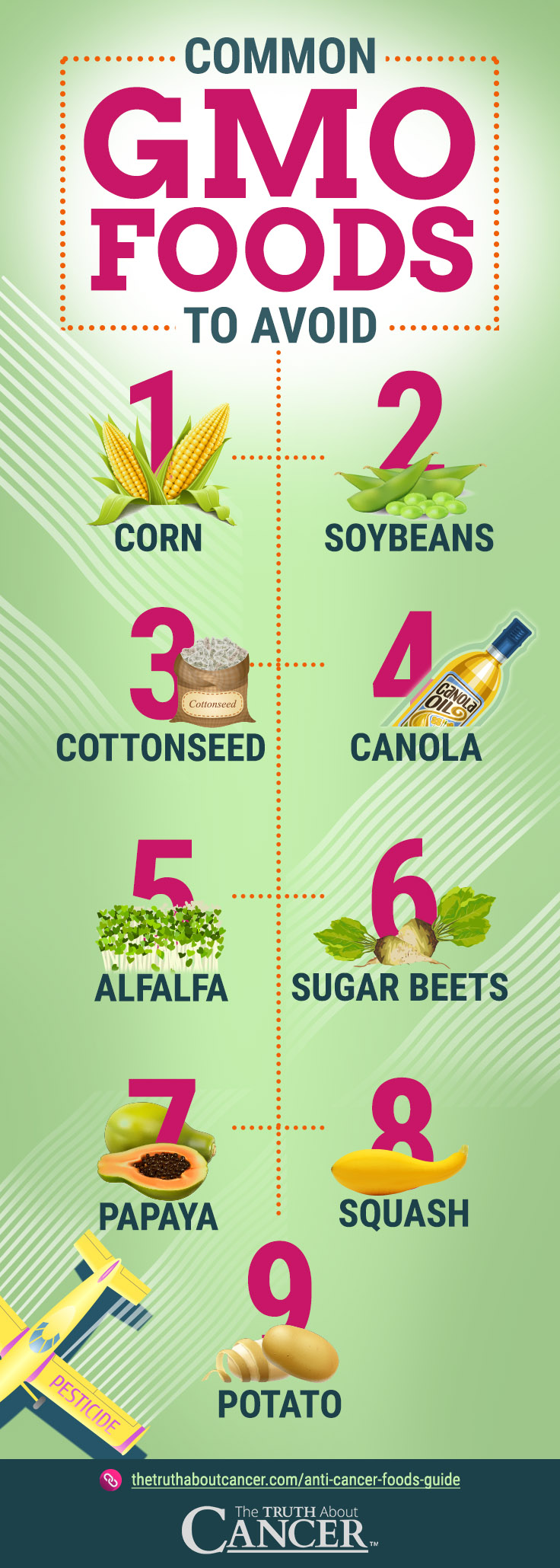The world’s food supply has changed drastically. It is almost certain that lurking in any given household are products that in previous generations would not have passed for food. The problem has gone beyond food additives and contamination as corporations are allowed to create “food” in a lab using things nature never intended us to eat. That same food is being shown to potentially cause health issues, and in some cases, even cancer. This article will cover the basics regarding genetically modified foods, the best ways to avoid them, and how to find and shop for the most nutritious, anti-cancer foods.
Understanding Genetically Modified Foods
Thankfully, many more people are rapidly educating themselves when it comes to food quality and nutrition. In 2014, the organic food industry reached a record $39.1 billion in public demand. Contained under that organic food heading are non-genetically modified foods or simply non-GMO.
Genetically modified organisms (GMOs) are crops that are created by taking the genes/ genetic information from one organism and forcing it into another. This is drastically different from the age-old cross breeding techniques growers have used for centuries to produce desirable characteristics in their plants. To fully understand what GMOs are, a quick background on pesticides and herbicides is required since the three typically work in concert.
Pesticides & Herbicides (Glyphosate)
Pesticides are created from combinations of toxic chemicals that are then sprayed onto food as it grows. They are used to attract, destroy and/or mitigate unwanted pests.
Herbicides, commonly known as weed killer, are pesticides used to kill unwanted plants. In addition to the actual genetically modified organism, the role of pesticides and herbicides in the overall cancer-causing equation cannot be underestimated. GMO crops, pesticides and herbicides are almost always used together, which amplifies the potential toxic load to the body.
Glyphosate, which is the number one most used herbicide worldwide, was upgraded to Group 2B carcinogen status by the World Health Organization’s International Agency for Cancer Research in 2015. This means it is “possibly carcinogenic to humans.” This fact alone should be enough for anyone seeking a cancer-free lifestyle to avoid glyphosate and GMO foods altogether.
There’s more because glyphosate was originally patented for use as a mineral chelator and was later adopted by the food industry for use as an ingredient in pesticides and herbicides. This means that when glyphosate is sprayed on crops, not only does it contaminate the soil and food you eat; it also blocks the uptake of vital, plant-based minerals. Mineral deficiencies alone can be responsible for many cancers and other diseases.
Genetically Modified Food: An Overview
These are the nine most common genetically modified plant crops on the market that humans typically eat:
- Corn (field and sweet)
- Soybeans
- Cottonseed
- Rapeseed or Canola
- Alfalfa
- Sugar Beets
- Papaya
- Squash
- Potato
These nine crops can be found with one of two distinct characteristics:
- Herbicide tolerance
- Pesticide tolerance or pesticide production
Herbicide tolerant crops, the most popular of which is Roundup Ready, are engineered with genes from bacteria, pieces of virus, and other things that aren’t naturally found in crops. Why is this done? For essentially what the name says – to tolerate large amounts of herbicide that would quickly kill a non-GMO plant.
In theory, the herbicide tolerant GMO crops were designed to make weeding easier for farmers by allowing them to spray their entire field with herbicide to kill weeds but not the Roundup Ready crops. The reality is that this has led to herbicide resistant weeds and increasing amounts of herbicide needing to be used on crops to combat that problem.
The other GMO version is categorized as pesticide tolerant or pesticide producing, as in the Bacillus thuringiensis (BT) toxin. BT is a bacterium found in the soil that is a known insecticide. The BT gene is inserted into the plant, essentially turning the crop into a mini bug-killing factory. When an insect attempts to eat a BT pesticide GMO crop such as corn, the toxic genes in the plant poke holes in the bug’s stomach, eventually killing it.
Unfortunately, a less severe but somewhat similar mechanism is happening in humans eating GMOs, leading to altered gut bacteria, leaky gut, suppressed immunity and genetic changes. Individually, each of these unwanted conditions has been shown to increase the risk of cancer.

In addition, it is an open secret that there is massive conflict of interest in the leadership in the FDA and other agencies in the US. Revolving door positions go to individuals such as Michael Taylor, who oversaw the 1992 FDA policy paper and was the former attorney for Monsanto, the world’s largest GMO company. Taylor was given the tailor-made position of Deputy Commissioner of Policy at the FDA to promote GMO food. When his work there was done, he went back to Monsanto as their Vice President for Public Policy.
Sixty-four countries, including China, require GMO labeling laws. The United States is not one of them. Now you know why.
Your Anti-Cancer Shopping Guide
Besides selecting non-GMO produce and other foods, it is essential to adopt a practice of choosing organic whenever possible. An official organic designation by the USDA means that the farm and its produce is free from prohibited chemicals, undergoes periodic inspections, adheres to specific requirements for its produce and the environment, and other pro-health practices.
Other than simply looking for an organic label while shopping, many organizations have prepared extensive lists and shopping guides. The Institute for Responsible Technology has released perhaps the best and easiest non-GMO shopping guide available.
Additionally, you can download smartphone apps for quick and easy in-store reference when you’re not sure what you’re getting. Some even have a shopping guide with lists and images of GMO foods and ingredients.
The Buycott app uses your phone’s camera and allows you to scan barcodes. It lets you know if you are avoiding GMO foods or not.
Choosing Quality Animal Foods
The Organic Consumers Association (OCA) estimates that 65 billion animals worldwide are in confined animal feeding operations (CAFOs). This practice sees animals tightly confined in overpopulated areas and mainly fed pesticide-laden genetically modified corn and soy meals instead of the pasture grass nature intended.
When it comes to purchasing any type of meat, milk, or eggs the basic rules are the same concerning GMO contamination.
Animal products are only as nutritious as the food they are fed and the care they get while being raised. Repeated studies have confirmed that feeding animals GMO food leads to sick and contaminated animals yielding inferior nutritional products.
For this reason, it is essential to read meat labels and look for the following certified designations when shopping for animal products in stores:
- American grass-fed certified
- USDA organic
- Animal welfare approved
Fish and Seafood
Unfortunately, genetic modification doesn’t just stop at produce. The Monsanto controlled FDA has approved genetically modified salmon. Fortunately, public backlash began immediately as Kroger, Safeway, Whole Foods, Aldi and many others committed not to sell GMO fish on their shelves. In addition, most farm-raised fish have similar issues to the animals raised in CAFOs because they too are often raised on GMO feed, dosed with chemicals and subjected to overcrowding, being barely able to move.
Here are some guidelines to follow when purchasing fish and seafood:
- Look for “wild caught” on the label
- Buy domestic and from local fishermen
- Avoid farm-raised fish and seafood (Atlantic salmon, tilapia, catfish, trout)
- Avoid fish high in mercury content: king mackerel, marlin, orange roughy, shark, swordfish, tilefish, and tuna (bigeye and ahi)
- Be aware that fish may contain PCBs. At risk species include bluefin tuna, rockfish, sole (English), rainbow trout, and Atlantic salmon
Safe Seafood Guides
The Monterey Bay Aquarium offers a free Seafood Watch app to download on your mobile device. It should be noted that the app doesn’t comment on mercury toxicity, yet it can assist you in making more responsible choices.
Food & Water Watch has a downloadable Smart Seafood Guide you can print out and carry in your purse or wallet.
Wild Game
Although many would still consider this a specialty area, wild game has witnessed a growth in popularity lately. This category includes venison, wild turkey, elk, bison, wild boar, ostrich, and rabbit, among others.
Much like pasture-raised chickens and grass-fed cows, due to the animal’s natural lifestyle, their meat is healthier and essentially untouched by GMOs and their chemicals. You can usually obtain wild game at local ranches, during local hunting seasons, and occasionally at local farms. Many health foods stores also carry wild game. The chains Sprouts Farmers Market and The Vitamin Cottage are also two possible options.
Find Your Local Farmer
Former FDA special agent Gary Collins became a whistleblower alerting the public about the monopolistic influence wielded by large food corporations. He warned that “there are just no checks and balances anymore.” Collins also added that the solution is “for the consumer to change it” by “supporting your local farmer, supporting your local economy, and building a relationship with those individuals.” Taking his advice, it is of the utmost importance to begin to plug-in to your local community food production and its small farmers.
There are a few simple approaches that can be activated today. First, farmers markets are popping up in nearly every city in the US as grocery store supply chains are unable to keep up with the exploding public demand for organic, non-GMO food.
Look for information about dates, times, and locations for local farmers markets in your local newspaper, posted at your local health food store, or online. Local Harvest and Eat Wild are two websites that can help you find local farmers markets near you.
Join a CSA
Your health and wellness is closely related to the distance your food has to travel, the overall quality of that food, and the direct relationship you have with your food and/or grower. For this reason, another great option is to deal directly with your local farmer. This can be accomplished by going to their farm. If that is not an option for you, you can join a CSA, which stands for community supported agriculture.
CSAs have become the most popular option to buy seasonal food from local farmers because of their centralized, streamlined structure. In a CSA, a farmer or local farm offers options to obtain their produce and other products through various formats. Most commonly, the public is offered a subscription, membership, or shares in the farm. These can take the form of bi-weekly, weekly, and/or monthly amounts of produce picked up from the farm or at designated drop-off locations around town.
Whether it is a CSA, farmers market, or face-to-face, interaction directly with your local farmer has superior advantages. It is hands down the best way to get the most nutrient-dense produce on your table. This win-win situation can be seen from every angle when you do your best to keep it local, non-GMO, and organic whenever possible.
Armed with the knowledge in this report, determining what practices a local farmer or farm adheres to can be found quickly by asking a few simple questions:
- Do you grow produce using non-GMO seeds?
- Do you use glyphosate or other toxic pesticides and herbicides?
- Are you certified organic? Or do you follow organic growing principles?
- Are your animals American Grass-Fed certified?
- Are your animals pasture-raised?
Growing Your Own Food
Although not for everyone, learning to plant and grow food is considered the best method for obtaining the absolute highest quality food. For those who have considered this option, it is vital to start slow and begin to master the learning curve. A simple tomato plant, herb garden, or window box can provide an education on the road to eliminating cancer-causing chemicals and organisms from your diet.
When planting a garden, you will need to avoid all the above mentioned pitfalls contained in this report. That means no chemical based pesticides, herbicides, or GMO seeds. Heirloom seeds, defined as seeds from valued plants (non-GMO) that have been passed down through generations, should be your number one choice.
By selecting heirloom seeds, you can be assured that there has been no genetically modified contamination. It is also best to choose organic soil to ensure the lowest amount of potential pesticide and herbicide contamination.
Heirloom seeds can be found at local seed exchanges, through local organic farmers, or online. Simply search for CSA and type in your city or zip code. Good websites are Just Food, Local Harvest, and Green People.
Summarizing a Plan of Action
To summarize, a good plan of action for sourcing the best anti-cancer foods would be to choose one of the levels below for optimal health protection while maximizing your food’s nutritional value:
Level 1 Protection: Grow your own heirloom seeds in organic soil rotation crops throughout the growing season.
Level 2 Protection: Buy from local farmers or CSAs that use only heirloom seeds and are certified organic by the state.
Level 3 Protection: While grocery shopping buy only certified organic, non-GMO produce.
Level 4 Protection: While grocery shopping, buy either certified organic or non-GMO produce. If non-GMO and not organic, minimize pesticide exposure by buying produce that has low pesticide residue according to the Dirty Dozen and Clean Fifteen lists by the Environmental Working Group.
Level 5 Protection: Buy fresh fruits and vegetables that are low on the list of pesticides and avoid fast food such as McDonalds, Burger King, etc.
When purchasing animal products, you want the highest quality possible. Look for products from animals that are pasture-raised and/or grass-fed and have plenty of space to roam freely. Preferably these animals roam on fields that are not sprayed with pesticides or herbicides, and have not been given any hormones or antibiotics.
Oftentimes, animals will be fed supplemental foods that may contain corn, soy and/or alfalfa. These foods are mostly GMO and you want animals that have been fed organic. At farmers markets and CSAs you can ask the farmer. Avoid buying from farmers that don’t know what is in their animals’ feed.
What shopping practices do you follow to ensure your family is eating the highest quality anti-cancer foods possible? Please share in the Comments section below.
Editor’s Note: This article was initially published in 2017 and has been updated in 2025.
Article Summary
Genetically modified organisms (GMOs) are crops that are created by taking the genes/genetic information from one organism and forcing it into another.
GMO crops, pesticides, and herbicides are almost always used together, which amplifies the potential toxic load to the body.
These are the nine of the most common genetically modified plant crops on the market that humans typically eat:
- Corn (field and sweet)
- Soybeans
- Cottonseed
- Rapeseed or Canola
- Alfalfa
- Sugar Beets
- Papaya
- Squash
- Potato
Herbicide tolerant crops, the most popular of which is Roundup Ready, are engineered with genes from bacteria, pieces of virus, and other things that aren’t naturally found in crops.
64 countries, including China, require GMO labeling laws. The United States is not one of them.
Animal products are only as nutritious as the food they are fed and the care they get while being raised.
When purchasing meat, always check the label for the following:
- American grass-fed certified
- USDA organic
- Animal welfare approved






















Thank you Ty, for all you do.
It is difficult to plant fruits and vegetables all year along where I live in Ottawa, Canada because it gets so cold in the winter with full of snow.
Try sprouting broccoli seds (organic)
10x more powerful then broccoli
I sprout aduki as well
Will likely sprout wheatgrass next week too
Sometimes cancer can heal faster. 37 years ago I healed my stage 5 cervix cancer in 2 weeks. I worked on forgiving the person who hurt me most & during my whole life; followed Moerman diet & had a very strong new goal: after looking for someone who would grow up my kids after my death in a way I wanted it (that they would know why they lived; would have goals…), I found no one. Then I asked myself: “do I know why I live? Do I have goals..? The answer was no. I decided I wanted to live at least that long till I found answers to my questions => I would be able to teach my children that I wanted to grow up myself. I followed Moerman diet even 2 years after healing my cancer… to be sure it was all gone.. Later I learned energy healing & healed a colleague from metastatic lymphe cancer in one session. I did the session on thursday. He went to hospital the next monday for operation. He didn’t get the operation as it was all gone. He asked me afterwards:”did you work on my lymphe cancer”? My answer was yes I did…. that was the exercise.. work on what is needed most at this moment (he never told me beore that he had the cancer,but it was what came up as “needed the most now”). “Miracles” exist, but one can never promise a miracle.
I’m waiting for a miracle since so long… Please guide how u healed yourself and what is Moerman Diet.
Thanks
Christiane, I’m glad to hear of your and your friend’s healing – though, I believe it came from the Lord God – please give glory and gratitude to Him!
(Sorry, I don’t believe in energy healing.)
Aman, I pray to God that you can find peace and good health. In Jesus’ Name!
I pray for the Bollingers and everyone here.
Biblegateway.com. Follow Jesus. Worship the Lord God!
Love in Christ,
April P.
We’ve just moved from Australia to the USA… and let me just say, finding real food sources here has been a challenge!! The compromise of the USA food supply has been very disturbing to say the least… I’m equally shocked by the level of “blissful ignorance” when I raise these concerns with people I meet… and the thing I miss the most about living here, is the availability of fresh fruit and vegetable markets like we have back in Australia…!!